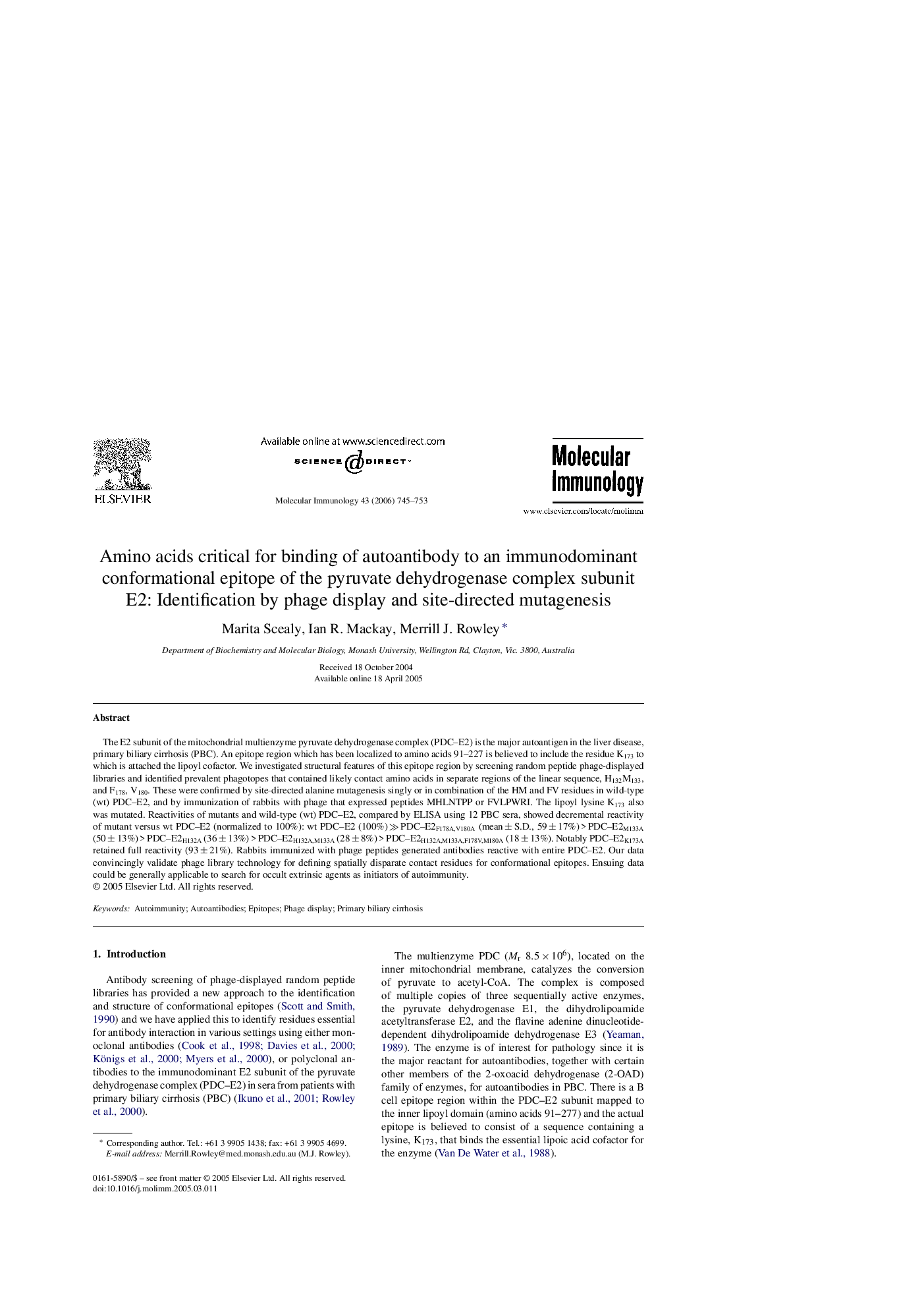| Article ID | Journal | Published Year | Pages | File Type |
|---|---|---|---|---|
| 2833598 | Molecular Immunology | 2006 | 9 Pages |
The E2 subunit of the mitochondrial multienzyme pyruvate dehydrogenase complex (PDC–E2) is the major autoantigen in the liver disease, primary biliary cirrhosis (PBC). An epitope region which has been localized to amino acids 91–227 is believed to include the residue K173 to which is attached the lipoyl cofactor. We investigated structural features of this epitope region by screening random peptide phage-displayed libraries and identified prevalent phagotopes that contained likely contact amino acids in separate regions of the linear sequence, H132M133, and F178, V180. These were confirmed by site-directed alanine mutagenesis singly or in combination of the HM and FV residues in wild-type (wt) PDC–E2, and by immunization of rabbits with phage that expressed peptides MHLNTPP or FVLPWRI. The lipoyl lysine K173 also was mutated. Reactivities of mutants and wild-type (wt) PDC–E2, compared by ELISA using 12 PBC sera, showed decremental reactivity of mutant versus wt PDC–E2 (normalized to 100%): wt PDC–E2 (100%) ≫ PDC–E2F178A,V180A (mean ± S.D., 59 ± 17%) > PDC–E2M133A (50 ± 13%) > PDC–E2H132A (36 ± 13%) > PDC–E2H132A,M133A (28 ± 8%) > PDC–E2H132A,M133A,F178V,M180A (18 ± 13%). Notably PDC–E2K173A retained full reactivity (93 ± 21%). Rabbits immunized with phage peptides generated antibodies reactive with entire PDC–E2. Our data convincingly validate phage library technology for defining spatially disparate contact residues for conformational epitopes. Ensuing data could be generally applicable to search for occult extrinsic agents as initiators of autoimmunity.
